I was wrapping up a morning of pigeon control and headed to the truck when a straggler swooped in and perched on a cow barn roof, 40 yards away. Snap… Whap! The .22-caliber pellet struck with a decisive blow. Amidst a shower of feathers, the pigeon slid down the corrugated-steel roof and plopped within inches of a disinterested cow. Others located mere feet from the gun continued to munch on hay. The farmer was happy, his milk supply was uninterrupted, and his dairy was a couple dozen pigeons lighter.
Although downright nasty by air rifle standards, built-in noise reduction features belayed the gun’s full potential. Powered by a pre-charged supply of high-pressure air, its reservoir supplied 45 useful shots. Once back home, I simply hooked it up to a scuba tank and topped it off to 2900 PSI.
by Steve Markwith, author of Air Rifles: A Buyer’s and Shooter’s Guide
Modern Airguns – More Power
No doubt about it, airguns have evolved since the days of Ralphie’s Red Ryder. Actually, you can still buy one, and you can still shoot your eye out!
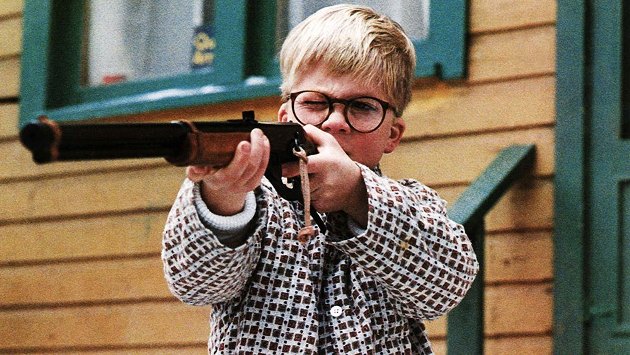
BUT, you could also tip over a 250-pound hog with some of the latest air-powered systems. Falling in between these extremes are barrel-cocking (springer) pellet guns commonly seen in outdoor catalogs and sporting emporiums – often advertised with extremely optimistic velocities.
Until the last few years, a third level of more exotic pre-charged pneumatic airguns achieved little more than cult status. But, recently, they’ve become more mainstream due to recognition of their true capabilities. Another class of airguns is built specifically for quiet shooting in confined areas. Designed for 10-meter indoor range competition, most true match-grade air rifles shoot .177-caliber pellets below 600 fps. They’re the antithesis of a smooth bore BB gun, but neither generate sufficient power for anything larger than mice or sparrows.
Related article: Why Every Prepper Needs a Survival Pellet Rifle
That’s also true of many CO-2 powered airguns which are great for riddling cans. Some are close knockoffs of well-known military arms with full-auto capabilities, and an absolute hoot to shoot! However, for purposes of this post, pest control and small game hunting count, so we’ll need to move up the power ladder.
The upper rung of air guns is occupied by pre-charged pneumatic (PCP) rifles, designed to hunt deer or feral hogs. They’re specialized systems with a bark, and much less suitable for quiet backyard practice. Move downward a few rungs and quiet shooting becomes possible, including elimination of aggravating bird feeder-raiding squirrels. Similar technologies permit hunting in some spots off-limits to firearms. Although less of an issue in my area, I do feel much safer when sniping squirrels from trees with relatively short-range .22-caliber pellets – as opposed to .22 rimfire bullets that can travel a mile.
Modern Airgun Pellet Calibers
Common airgun pellet calibers range from the common BB to .177, .20, .22, .25, and .35. Niche guns also exist in .30, .35, .45, and .50-caliber. The BB is too light for hunting anything beyond small pests, and they’ll ricochet like crazy off hard surfaces! That leaves pellets as the preferred projectile with .177 being the most common.
Most are made from soft lead, with a solid nose that tapers to a wasp-waist followed by a hollow skirt. The resulting low mass boosts speed, but poor aerodynamic qualities limit their carrying range to several hundred yards (or less), making them the safer choice for settled areas.

The small .177 pellets can fly faster than larger calibers, in some cases approaching .22 LR velocities. But .177s quickly fizzle out. Actually, regardless of the airgun, caliber hydrostatic shock is unlikely, so projectiles with greater frontal area are more effective on live targets. Hence, the popular .22-caliber alternative. To a lesser extent, .20 and .25-caliber airguns are encountered.
Some of the “pellets” are actually lead bullets which travel at handgun velocities. Odds of running into them at standard retail locations are remote. All things considered, factoring in useful power and widespread availability, a .22 is hard to beat.
Defining Airgun “Power”
For use against large squirrels or pigeons, I’ll take a .22 airgun with a muzzle velocity of 800 feet per second (fps) or more. At that speed, a typical diablo (wasp-waisted) lead .22 caliber, 15-grain pellet will generate roughly 20 foot-pounds of energy. It will also smack a pigeon with much more authority than a faster .177.
That said, the British have learned to live with less. To avoid onerous Firearms Certificate (FAC) requirements, they use airguns throttled back to 12 ft. lbs. (roughly 600 fps, using .22 pellets). Although anemic by U.S. standards, an entire airgun industry has evolved to meet UK hunting interests which center on rabbits and pest birds. The Brits are careful to take head-shots, and their highly-refined guns have the accuracy to make them. The good news is export FAC versions of these guns have arrived on U.S. shores with no such limitations. As we’ll see shortly, many are pre-charged pneumatic (PCP) types capable of much better numbers – like 900+ fps/30+ ft. lbs. in .22-caliber, with standard 15-grain pellets!
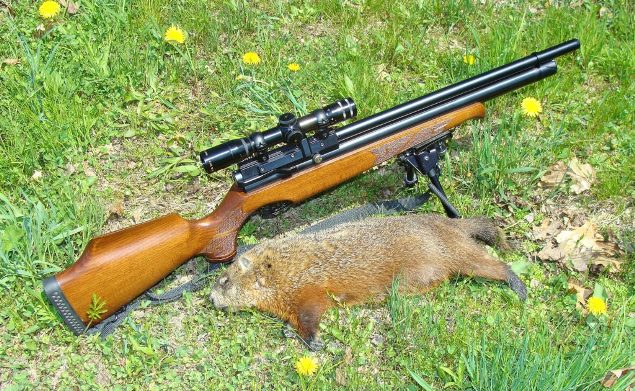
To put things in perspective, an “anemic” .22 Short fired at 900 fps develops around 70 ft. lbs. through a bullet twice the weight of an average 15-grain .22 pellet – 29 grains. Hopefully, this will offer some guidance on the size of suitable quarry. Some of the stuff depicted on the various media venues using .22 or .25-caliber airguns is a bit sketchy. Head-shots might sound good on paper, but my standard involves humane upper-body hits.
Even with those, on average-size gray squirrels, my zippy 900 fps .22 air rifle is noticeably less decisive than a .22 LR subsonic HP. In a pinch, I’d use this airgun on a raccoon, but only with a head-shot inside 30 yards. Regarding woodchucks, a feisty .22 LR HP won’t always anchor one with a well-placed chest shot. I have taken a few with air rifles, but only through careful shots to their noggins. Some folks hunt western coyotes with .25s, but .30s or .35s are preferred. Deer are the domain of .45-caliber or larger airgun slugs fired from those big-bore PCP rifles. And, in all cases, shot placement matters greatly!
Useful Airguns
Sticking with backyard or smaller woodlot airguns, to achieve the 20 ft. lb. threshold you’ll need an air rifle – either a PCP, or a potent springer. A few PCP pistols can come close though, and less velocity could even be preferable in some situations.
Pistols: One possible pest contender is Benjamin’s U.S-built .22 Marauder. This PCP bolt-action repeater clocks around 700 fps and offers 20-25 shots per charge. Since airguns are not federally regulated, you can even buy one with an accessory shoulder stock! The receiver is grooved to accept optics, too. However, it’s far from a tiny pistol (although I’m still trying to resist one). Pump-up pneumatic and CO-2 pistols will be lucky to break 500 fps in .177-cal. Some springers can do a bit better but they’re big and hard to cock. For critters, the answer is a pre-charged pistol.
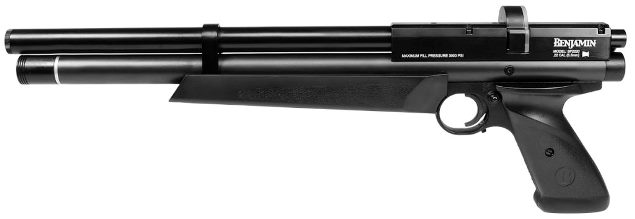
Pump-up (multi-stroke) pneumatic rifles: As a youngster, I saved up for a .20-caliber (5mm) Sheridan, which seemed like a true magnum at the time, but probably struggled to exceed 650 fps. It also had an audible snap, a product of instantaneous decompression; but, it laid a number of starlings and gray squirrels low through careful shooting at prudent distances. Decades later it’s still holding air!
Instead of using the maximum eight strokes, I sometimes just give it 3; just enough to smack the south end of a feeder-raiding squirrel without any lasting effects. These guns are hard to scope so I stick with the open sights. You’ll get plenty of exercise between each shot, meaning long plinking sessions are unlikely. Don’t exceed the recommended pumps or you’ll risk air-locking the valves, but store it with a couple strokes of air to maintain their seating (which keeps out dust particles).
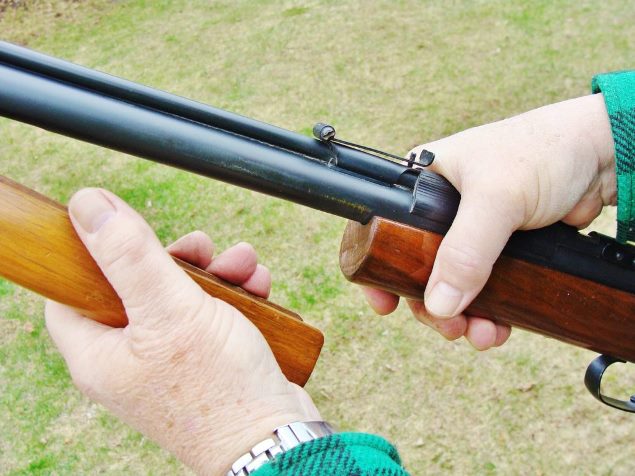
Springers: My experience with these guns goes back to the late 1970s, when Dr. Beeman began importing elegant European models. I’ve owned a bunch of ‘em since and still keep a good barrel-cocking gun nearby, along with a tin of pellets. It’s a perfect grab & go rifle for use against marauding pest birds that invade the backyard feeder.
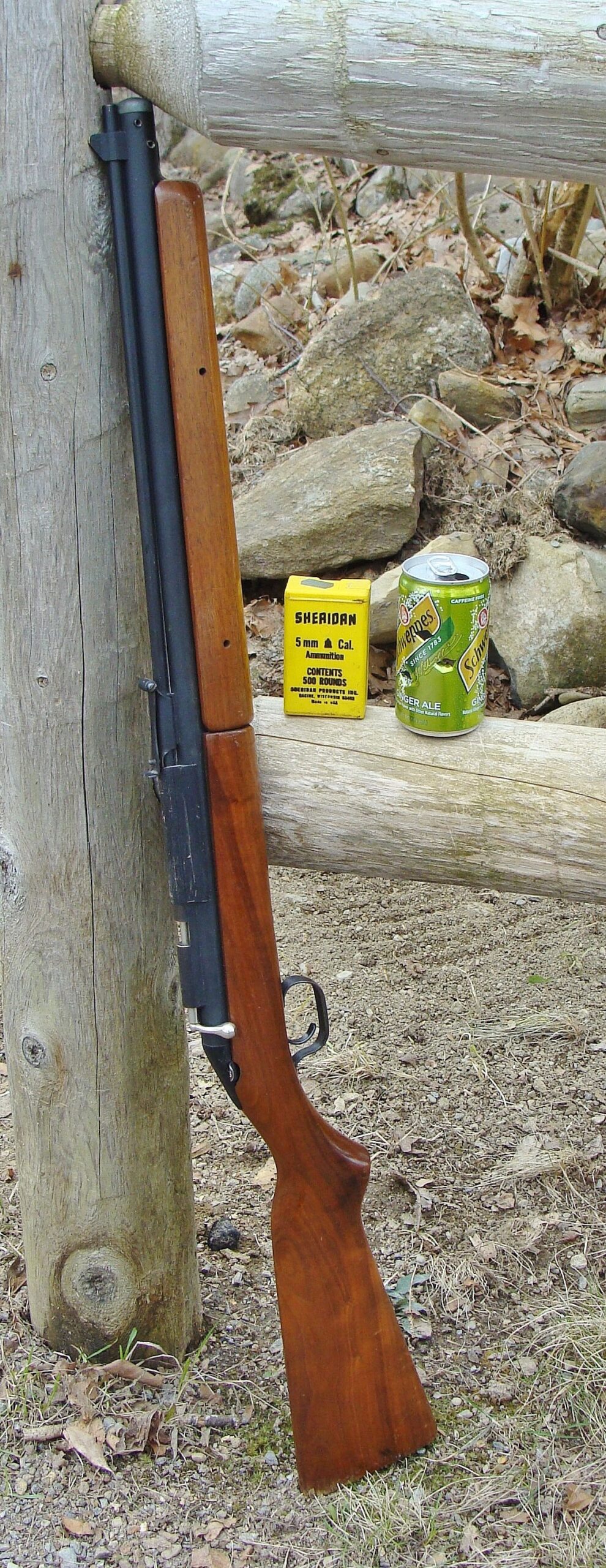
Mine is a German-built Beeman R-9 in .22-caliber (a bit uncommon since most R-9s are .177s). Typical of most springers, it’s listed velocity of 740 fps is actually 680 fps using standard-weight 14.8 grain pellets. Still, it’ll clobber starlings out to 35 yards or so. I zero it at 30 yards using an airgun-rated scope. Quarter-size groups are the norm with JSB 14.8-grain Exact Express pellets, but it shoots Crosman 14.8-grain Premier HPs nearly as well and they’re stocked at the local Walmart. So are some barrel-cocking guns of varying lineage and quality; often sold as package guns with scopes.
But big-box businesses are not the realm of guns like the R-9 or good JSB pellets, most of which must be mail-ordered from airgun dealers or off Amazon. Odds are strong you’ll get what you pay for, too. More power comes with increased size, weight, and cocking effort.
Some springers can reach 800 fps (or more) in .22-caliber, but they won’t be small. They’ll also be harder to shoot due to vibration and their unique recoil, which creates a phenomena known as “hold sensitivity” (example: don’t test for accuracy off sandbags). These forces can also unravel scopes not designed for the unique impulse. Springers also shouldn’t be left cocked for long. However, some recent gas-piston designs work like gas struts which eliminate the spring altogether, meaning they can remain cocked (at least, for a while).
I just stick with my German springer because it’s simple and only weighs a bit above eight pounds, scoped. Most 800 fps guns will weigh that much without one. Although decent open sights are often standard, full potential won’t be realized without an airgun-rated scope. Those who can live with a hefty gun might consider Sig’s new ASP20 .22 gas-piston barrel-cocker, some of which come with a decent Sig scope. It has a legal built-in “sound moderator” too, although many springers are fairly quiet without one.

Pre-charged pneumatic rifles: To reach 800 fps or more without lugging excess weight, I simply switch to a pre-charged pneumatic. These guns are totally recoilless and dead-nuts accurate, but they do require an external air source to pressurize their onboard reservoirs. Some use separate bottles while others like mine employ a tube below the barrel.
Using a fitting supplied with the gun, I simply connect it to a HP hose assembly and decant air from a scuba tank. Some use a special HP pump, which I avoid due to concerns about accumulating moisture. A few diehards even use pricey compressors designed for these guns. Whatever the source, it needs to produce clean dry air, usually at 3,000 PSI or above! At such pressures, a bare-muzzle PCP gun will produce quite a snap. Fortunately, most are now “moderated” via a barrel shroud that greatly reduces the report. Some aren’t much louder than a heavy-duty stapler!
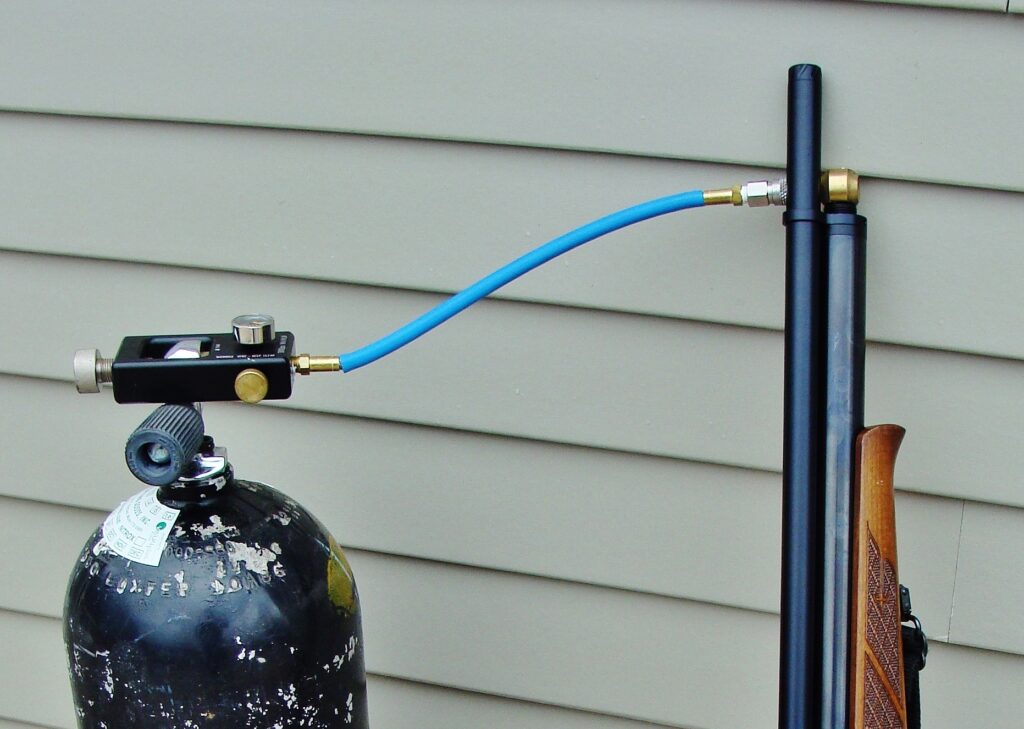
For pigeon control jobs inside barns or stables, I use the above domed 14.8-grain .22 JSB Expresses, shot at 800 fps/20-ft. lbs. The gun of choice is a British-built Air Arms repeating carbine, cocked via a side-lever, and fed from a small revolving 10-shot magazine.
Zeroed at 35 yards with a 3×9 AO scope, it’s capable of tiny groups. The gun’s operating pressure is 2,900 PSI. The power is adjustable, so I throttle it back a bit to gain 40 useful shots from its carbine length air reservoir. The gun’s onboard gauge will then read just below 1500 PSI, meaning it’s time for a refill.
For outdoor pigeon missions, my ultra-quiet, 920 fps, single-shot bolt-action .22 Air Arms rifle is noticeably more effective. Its longer air cylinder also provides 45 useful shots despite the extra 100 fps. That gain wouldn’t matter much with head shots, but because light pellets drift in wind, the upper body is a safer bet.
Even at that, I’ll often wind up holding a half-bird or more to the side at 35-40 yards. Lightweight airgun projectiles quickly shed velocity, but pigeons are still doable at 60 yards (or further) with a rangefinder. Zeroed for 40 yards, it can shoot dime-sized groups with 15.9-grain JSB Exact Jumbos. Out to 50 yards, all impacts will be within an inch or so of the crosshairs. This gun has also accounted for a number of crows, some beyond 80 yards; however, that’s pushing things. Results are much better inside 50 yards. For extra oomph, you could go with the increasingly popular and harder-hitting .25-caliber, assuming the rifle is potent enough to flatten its trajectory.

One viable PCP choice (among many) is Benjamin’s Marauder, a U.S.-built repeater. Available in .177, .22, and .25-caliber, it sells for half the price of many high-end imports. My British guns have served me well (one for 13+ years). Like other airgunners, I store them fully charged (to 2,900 PSI). But eventually, at separate times, each needed servicing to fix a slow leak. The repairs involved shipping to a distant airgun specialist. Repairs to the popular Marauder could be less problematic. Its lower cost could also offset the requisite extras like a tank and hose-assembly, or a pump.
More power! You’ll absolutely need a PCP gun to drive the big-bore specialty slugs, many of which travel at .45 ACP speeds. Each shot will suck through lots of air, so frequent recharges are the norm, placing these guns in the realm of true airgun aficionados. Some do have interesting capabilities though – like the ability to shoot arrows!
Airgun Options and Costs
You’ll pretty much get what you pay for. If nothing else, especially with extra time on-hand, it’s fun to surf the net. There are several good airgun dealers spread out across the U.S. After brief visits, you’ll quickly note that covering everything would be impossible. So, what follows is just a guide, based mostly on personal experience. Many options can be found at one of the biggest dealers – AirGun Depot.
Quick and Dirty Guide to Airguns
Bargain barrel-cockers: Some people will settle for a $200 “package-gun” which may come with its scope mounted – or not. With only casual use, it may even do the trick. I’d be thorough regarding product reviews, though. Even some of the well-known firearms manufacturers will rebrand guns from regions that also produce viruses. Good chance those supply lines could soon dry up. Also, I’d be leery of buying a used springer. I’ve encountered some in gun shops that were cocked, much to the detriment of their springs.
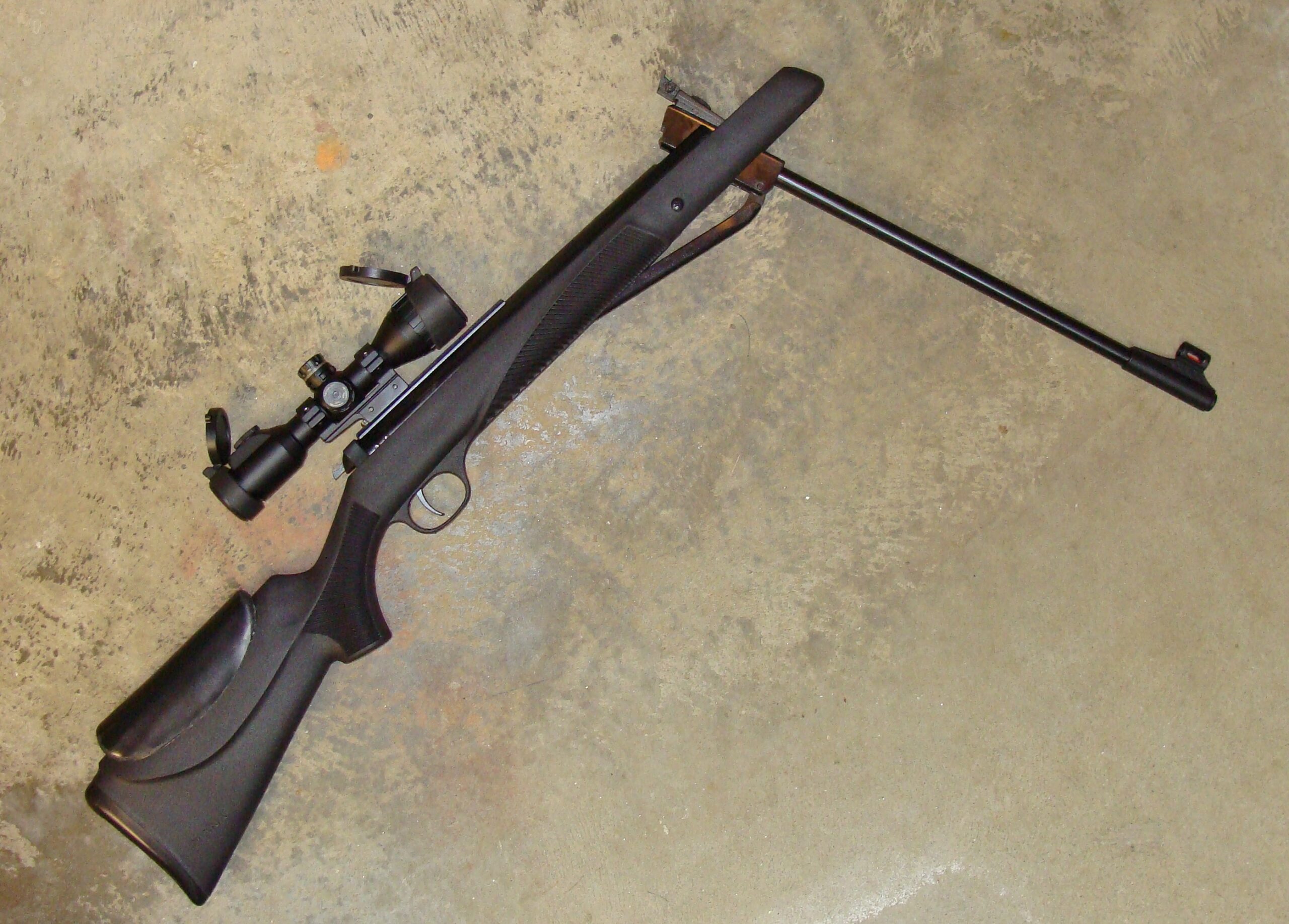
Next price-point: For more money, several time-proven springer imports can be had. A few example include British Air Arms choices, Germany’s Diana (RWS) offerings, and guns from Herman Weirhrauch (HW) which also makes the Beeman R-series.
A number of these guns sell for well below $500. My middle-of-the-road R-9 springer is still available, scoped for that amount. For around $600, the aforementioned Sig ASP20 gas-piston package can be purchased. Sig is all-in on a full line of shooter-worthy products. Their latest gas-piston rifle is new, but they’ll stand behind it.
Pre-charged choices: The high-end British and European PCP imports from Daystate, Air Arms, Brocock, BSA, and FX, etc., are true works of art. Some easily exceed $1,000. However, most can be serviced through U.S. dealers, and those that value quality won’t be disappointed. The U.S. firm Airforce builds some really interesting guns at various price-points, including models in big-bore calibers.
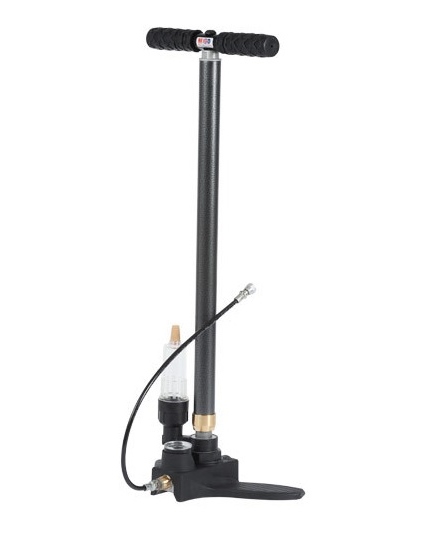
Benjamin’s PCP Marauder rifle is available as a scoped package for just above $600 (less the charging gear). Benjamin is part of the established Crosman marque, which has been building airguns for decades. They also sell much more affordable PCP choices, some of which come complete with hand-pumps.
Others: Speaking of hand-pumps, Benjamin’s $400 PCP pistol is a good candidate for one. Unlike rifles which will give you quite a workout, the pistol’s smaller reservoir needs less strokes. Or, you could go with their lightweight multi-stroke pump-up rifle. Several strokes per shot will do it, and the Benji has recently been upgraded with a bit more punch, for around $200. Add a tin of pellets and you’re in business for casual use.
Modern Airgun Summary

Regardless of your choice, read the manual! Just for starters, high-pressure air and some lubricants don’t play much better than BBs and eyeballs, and there are other concerns unique to each system. Thus, two designs worth a revisit are springers and pre-charged rifles. Thinking back to my first PCP purchase, I remember being baffled about the charging process, not to mention other details. Turns out springers also have their share of quirks, beyond those briefly covered here.
Stay tuned for future posts on each. Meanwhile, happy and safe shooting. Oh, and be careful, or you’ll shoot your eye out!
Read the author’s book Air Rifles: A Buyer’s and Shooter’s Guide for more information.

1 comment
Interesting article, but I feel you bounced around a bit. Overall you extol the virtues of pre-charged pneumatics and I know they’re considered the best of all airguns. If you had titled the article “Why PCP airguns are the best” then it would have been clear you prefer them and what you were going to focus on.
In reality, as you vaguely or indirectly mentioned, the old Benjamin Sheridan Blue Streaks were and still can kick ass on vermin. And the fact is that many of us can’t afford those super guns. That’s okay because many find the cheaper brands or domestic models provide years of enjoyment and utility and they don’t cost a fortune to own and use. I’d like to see more focus on this class of airguns. No matter how great those PCP’s are, it’s like talking about a custom made hunting shotgun to person on a Maverick 88 budget.
As one who owns such rifles from big box stores, I am realistic of their capability and limitations, but like to know how to maximize their potential and get the best use or performance out of them. So maybe you can talk about their virtues in another article.